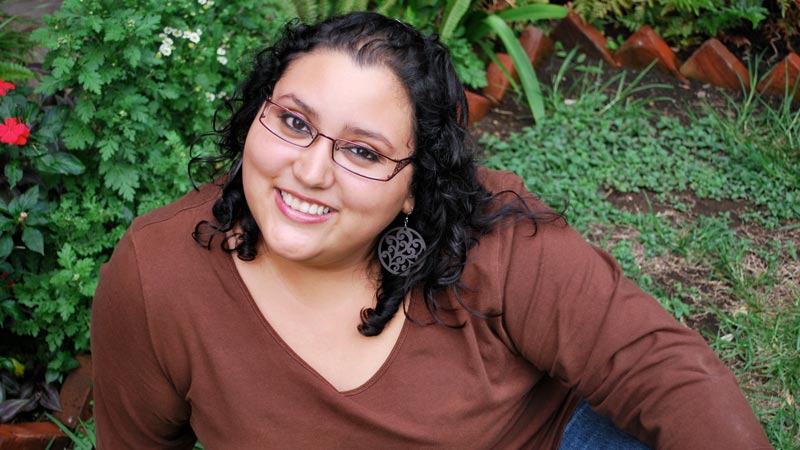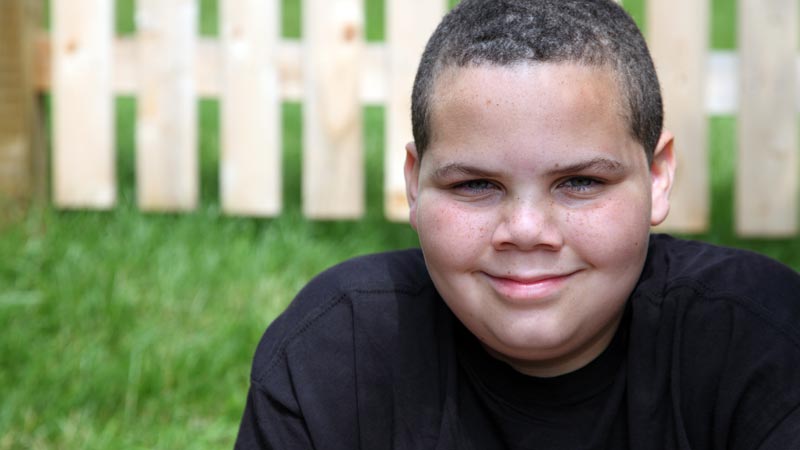Childhood Overweight and Obesity
Children and teens with overweight or obesity can develop serious health problems with lifelong consequences.
At Children’s Health℠, we offer a wide range of treatments and resources that address the specific needs of the whole child, whether the extra weight is a small or large amount. Our multidisciplinary team of dietitians, exercise coaches, surgeons and child psychologists work with your family to develop a comprehensive, personalized program. Our goal is to help your child reach a healthier weight they can keep throughout their life.
What is Childhood Overweight and Obesity?
Your child’s body stores extra calories when they eat more than their body uses. These extra calories are stored in fat cells to be used later for energy. However, when your child isn’t active, their body continues to develop fat cells. This build-up of fat cells leads to overweight and eventually, obesity.
Results from the National Health and Nutrition Examination Survey show that 12.5 million (about 18%) of children and young adults between 2 and 19 years old have obesity, and another 10% have overweight. That number has almost tripled since 1980.
Children and teens with overweight or obesity can develop serious health issues, like diabetes, liver inflammation, high blood pressure, breathing problems during sleep and many other medical problems. Left uncorrected, these health conditions can affect how they learn, play, interact with their peers and grow into adulthood.
What are the different types of Childhood Overweight and Obesity?
An unhealthy weight is defined by a child’s body mass index (BMI). BMI is calculated using height and weight. It doesn’t measure body fat directly but is a good indicator for most children and teens.
Because the normal BMI of children changes as they age, your child’s weight status (healthy weight, overweight, obesity) is found using BMI categories that are age- and sex-specific. Types of unhealthy weight in children include:
Overweight
A child or teen has overweight when their BMI falls between the 85th and 95th percentile, which is a medium-high BMI for the child’s age and gender.
Obesity
A child or teen has obesity when their BMI is greater than the 95th percentile, which is a high BMI for the child’s age and gender.
A child with a BMI just above the 95th percentile may not seem to have obesity, a term many people associate with severe excess weight, but “obesity” is a medical term that indicates a health problem. It is best to pay attention and address obesity when it is mild and easier to treat than severe obesity.
What are the signs and symptoms of Childhood Overweight and Obesity?
Children and teens with overweight or obesity:
- May have medical problems now, like hypertension, non-alcoholic fatty liver disease, depression, type 2 diabetes and obstructive sleep apnea
- Have a 70-80% chance of being adults with overweight or obesity
- May develop health issues as young adults that are usually seen in 40-to-60-year olds
- Are more than twice as likely to die before age 55, compared to children without obesity
- May be socially isolated
- May be bullied
How is Childhood Overweight and Obesity diagnosed?
Obesity is different in children and teens than it is for adults. Children are growing, and boys and girls mature at different rates. Because of this, BMIs are calculated by comparing height and weight against growth charts that account for these age- and sex-related differences. BMI charts show how your child’s BMI compares with others of the same age and gender.
Your child’s pediatrician may also check for health conditions that may be caused or worsened by a high weight. They include:
- Diabetes or prediabetes
- Fatty liver
- High blood pressure
- Cholesterol problems
- Sleep apnea
- Menstrual irregularity
- Gallstones
- GERD
- Bone problems
- Asthma
Not every child needs to be evaluated for all of these conditions. Your physician will tell you exactly what the next steps are. Each year, specialists at Children’s Health see more than 12,000 pediatric patients for childhood obesity and other endocrine-related conditions. We have the skills and resources necessary to provide comprehensive and compassionate care for your child too.
What are the causes of Childhood Overweight and Obesity?
Obesity can be caused by a variety of factors, from your child’s environment and genes to what they eat. Examples of causes include:
- Easily available unhealthy food and drink
- Too much time sitting at a desk or playing video games
- Limited recess or physical education
- Poor sleep habits
- Stress or anxiety, which for some people leads to eating even when they are not hungry
- Medications that increase appetite, like steroids and some seizure medications
- Genetics, with obesity sometimes running in families
- Hormone conditions, like low thyroid or Cushing’s syndrome. These are actually very rare and usually, a high weight is not the only symptom.
How is Childhood Overweight and Obesity treated?
If your child has obesity, the first step should be a complete medical exam by their pediatrician. In most cases, the rare physical problems that cause obesity will be ruled out and treatment can begin.
Weight improvement comes from reducing the number of calories eaten while also increasing physical activity. Less food and drink and more physical activity means the body looks for extra energy (calories) where it is stored in body fat. These changes not only improve weight, they also improve the weight-related problems, like hypertension and fatty liver.
Families can find low-cost menus, recipes, serving sizes and more on ChooseMyPlate.gov. But there is a lot to learn and changing habits can be hard. Here at Children’s Health, we have programs that will give you and your family the support you need.
Dietitians for children with obesity
Registered Dietitians are the food and nutrition experts. Dietitians will figure out what your child is eating and drinking and what your child needs for good health, and then teach you step-by-step changes.
Our dietitians supply personalized information based on your child’s age, activity level and any health conditions. We also take into account your family preferences and routines when designing any program.
Dietitians see families over a series of visits to help with any challenges that come up and build knowledge. Families often have these questions about childhood obesity:
- How much food is the right amount for my child?
- How often does my child need to eat?
- What do I do when my child is picky?
Our Registered Dietitians apply their expertise to disease prevention and health management and can improve your child’s health and well-being, improve their quality of life and lower health care costs.
Bariatric surgery for childhood obesity
For children and teens with high BMI, bariatric surgery combined with lifestyle change is very effective. Children can reach a healthier weight, increase their self-esteem and reduce the likelihood of chronic disease following this type of surgery.
The Children’s Health bariatric surgical program is designed for children and teens. Our team members are experts in childhood obesity. Working with families, they carefully evaluate and educate children on weight management and provide support throughout the procedure.
Community program for childhood obesity
Get Up and Go is a free, 10-week Children’s Health program offered at YMCAs around Dallas. Each week is 90 minutes of fun learning and physical activity for you and your child. The rest of the family is welcome too! Classes are for ages 6-11 years and for 12-14 years.
Medical evaluation for childhood obesity
COACH: Childhood Obesity And its Consequences for Health. This Children’s Health program provides a comprehensive medical evaluation of obesity, body fat and medical conditions. A team that includes dietitians, a child psychologist and a social worker provides support for lifestyle changes.
Healthy tips for children with obesity
You can set up your child for a lifetime of healthy eating with these tips:
- Change eating habits, such as eating more slowly to allow the body to digest food and create a feeling of fullness
- Work with your child to plan meals and make better food selections, such as eating fewer fatty foods and avoiding junk or fast foods
- Talk about reducing and controlling portions to eat fewer calories
- Help your child to increase physical activity and have a more active lifestyle. Something as easy as walking can take off pounds. Experts suggest that your child take part in 60 minutes of exercise daily
- Talk with your child about what they eat at school. Help them understand the best way to eat sensibly away from home
- Eat meals together as a family instead of while doing other things, such as watching TV
- Don’t use food as a reward for good behavior
- Limit snacks in general and work with your child to have healthy snacks, such as vegetables or fruits
- Set realistic goals for weight loss in consultation with your child’s doctor. This makes it less likely that your child will become discouraged when they don’t lose weight quickly enough
- Rely on the 5-2-1-0 rule every day
- 5 fruits and vegetables
- 2 hours or less of screen time (TV, games, social media)
- 1 hour or more of physical activity (Backyard play, recess, physical education, walks and bike rides, as well as team sports can be done in chunks of 10 or 20 minutes, if that works better for your child’s schedule.)
- 0 sugar-sweetened beverages (Examples to avoid include soda, sports drinks, sweet iced tea, Kool-Aid, and juice. Choose water, instead.)
You can also create a home that encourages and supports healthy choices with these guidelines:
- Keep only healthy food in the house
- Set a daily schedule of three meals and one snack at planned times to avoid adding extra calories with nibbles here and there (children 5 and under may need two snacks)
- Provide snacks with two food groups but small servings. Some examples are string cheese and an apple, celery and peanut butter or a banana and yogurt
- Eat together as a family as much as possible, with TV and electronics turned off. Not only will this minimize unmindful eating, but it will build family relationships (especially important in the teen years) and allow adults to be role models for healthy eating
- Support physical activity for your child. Make sure balls, jump ropes and frisbees are available. Consider sports and dance classes at nearby recreation centers. Play as a family with games like soccer, tag, swimming and hiking
Obesity is an issue that can continue throughout adulthood. The most common reason a person gains back lost weight is a return to their bad habits of eating too much and exercising too little.
Childhood Overweight and Obesity Doctors and Providers
-
 Sarah Barlow, MD Pediatric Gastroenterologist
Sarah Barlow, MD Pediatric Gastroenterologist -
 Alissa Doll, MD Pediatric Anesthesiologist
Alissa Doll, MD Pediatric Anesthesiologist -
 Nivedita Patni, MD Pediatric Endocrinologist
Nivedita Patni, MD Pediatric Endocrinologist -
 Faisal Qureshi, MD Pediatric Surgeon
Faisal Qureshi, MD Pediatric Surgeon -
 Charina Ramirez, MD Pediatric Gastroenterologist
Charina Ramirez, MD Pediatric Gastroenterologist -
 Amanda Shaw, MD Pediatric Endocrinologist
Amanda Shaw, MD Pediatric Endocrinologist -
 Bethany Cartwright, MD Pediatric Endocrinologist
Bethany Cartwright, MD Pediatric Endocrinologist -
JAJoaquin Adame, APRN, PNP-PC Pediatric Nurse Practitioner - Endocrinology
-
EGEmily Guthrie, APRN, PNP-PC Nurse Practitioner - Endocrinology
-
 Grayce O'Neill, PA-C Physician Assistant - Pediatric Surgery
Grayce O'Neill, PA-C Physician Assistant - Pediatric Surgery -
 Jimmy Penn, APRN, FNP Nurse Practitioner - Endocrinology
Jimmy Penn, APRN, FNP Nurse Practitioner - Endocrinology -
 Bernice Samuel, APRN, FNP Nurse Practitioner - Endocrinology
Bernice Samuel, APRN, FNP Nurse Practitioner - Endocrinology
-
 Brandi Allen Registered Dietitian (RD)
Brandi Allen Registered Dietitian (RD) -
 Cinthia Piva Blackburn Registered Dietitian (RD)
Cinthia Piva Blackburn Registered Dietitian (RD) -
 Julia Brown, RD Registered Dietitian (RD)
Julia Brown, RD Registered Dietitian (RD) -
MCMarjorie Craven Registered Dietitian (RD)
-
 Kara Gann Registered Dietitian (RD)
Kara Gann Registered Dietitian (RD) -
 Alex Goolsby Registered Dietitian (RD)
Alex Goolsby Registered Dietitian (RD) -
 Amy Holcombe Registered Dietitian (RD)
Amy Holcombe Registered Dietitian (RD) -
_Nutrtion+TN.jpg?MOD=AJPERES&CACHEID=ROOTWORKSPACE.Z18_6IH81240MO2M00A9420PHQ3004-b466e867-dadf-4d3c-94b7-dd882af412d6-m.3RXV8) Michaelann Rangel Registered Dietitian (RD)
Michaelann Rangel Registered Dietitian (RD) -
 Juana Montelongo Soto Registered Dietitian (RD)
Juana Montelongo Soto Registered Dietitian (RD)
Resources
For tools and more information on childhood obesity, please visit these sites:
- A BMI calculator for those less than 19 years old: Centers for Disease Control and Prevention
- Facts about childhood obesity, including the risks, causes and what can be done about it: Centers for Disease Control and Prevention
- Lots of ideas about how to help your child develop healthy habits: American Heart Association
- A quick overview of things you can do to help your child manage their weight: National Institutes of Health
- A worksheet to help you evaluate what happens at your house and what changes might be helpful: American Academy of Pediatrics


